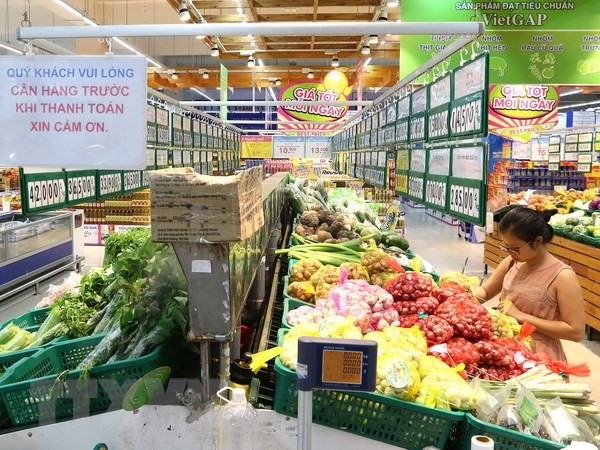 Society
Society

Malnutrition is unacceptably high and affects every country in the world, but there is also an unprecedented opportunity to end it, according to 2018 Global Nutrition Report introduced in Bangkok on Thursday.
 |
| A supermarket in HCM City. — Photo Vietnamplus.vn |
BANGKOK — Global malnutrition was at an unacceptably high level and was affecting every country in the world, but there was also an unprecedented opportunity to end it, according to the 2018 Global Nutrition Report introduced in Bangkok on Thursday.
The report was released at the “Accelerating the End of Hunger and Malnutrition” event, which gathered decision makers, researchers and practitioners from key organisations such as the Food and Agriculture of the United Nations, UNICEF, the World Health Organisation and the European Union.
The world’s most comprehensive report on nutrition highlights the worrying prevalence and universality of malnutrition in all its forms. In its fifth edition, it provides a concrete overview of progress made and calls on all stakeholders to act now to address malnutrition.
The report provides new and expansive data highlighting the changing face of malnutrition in Asia. It also sheds light on new initiatives from across the continent designed to respond to this greater and more diverse challenge.
The burden of malnutrition is unacceptably high
Home to a significant proportion of the world’s population, Asia is one of the hardest hit areas when it comes to malnutrition.
More than half of the world’s children impacted by wasting (26.9 million) live in South Asia. Of the three countries that are home to almost half (47.2 per cent) of all stunted children, two are in Asia: India (46.6 million) and Pakistan (10.7 million).
Of the 38.3 million children globally overweight, 5.4 million and 4.8 million are in South and East Asia respectively (26.6 per cent of the total). The prevalence of adult obesity in Hong Kong rose from 10.4 per cent in 2015 to 10.6 per cent in 2016 (overweight from 40.5 per cent to 40.9 per cent). The whole region is undergoing significant growth in the consumption of packaged foods.
Corinna Hawkes, Co-Chair of the Report and Director of the Centre for Food Policy, said the figures called for immediate action. Malnutrition is responsible for more ill-health than any other cause.
“The health consequences of overweight and obesity contribute to an estimated four million deaths globally. The uncomfortable question is not so much “why are things so bad?” but “why are things not better when we know so much more than before?”, said Hawkes.
Progress to date is simply not good enough
Significant steps are being made to address malnutrition. Asia experienced the largest regional reduction in stunting prevalence from 2000 to 2017 – from 38 per cent to 23 per cent. Nepal alone has seen stunting decline from 57.1 per cent to 36 per cent over the same period. Additionally, at a global regional level, adult overweight levels are least prevalent in Asian men and women (30 per cent) compared to the rest of the world.
But progress to date is not enough. At the global level, none of the countries with sufficient data are on course to meet all nine targets on malnutrition. Asia is no exception as no country is on course to meet all nine global nutrition targets assessed in 2018. Out of Asia’s 48 countries, only 11 countries are on track to meet the child overweight target and only 10 countries are on track to meet the child stunting target.
The report showed that the world was off track but the opportunity to end malnutrition has never been greater, nor has the duty to act.
Jessica Fanzo, PhD, Co-Chair of the Report and Bloomberg Distinguished Associate Professor at Johns Hopkins University, said: “While malnutrition is holding back human development everywhere, costing billions of dollars a year, we are now in a position to fight it.”
From policies such as sugar taxes, to new data that enables us to understand what people are eating and how we can best target interventions, the global community now has the recipes that work,” Jessica added
David Beasley, Executive Director, World Food Programme, said the information in the Global Nutrition Report goes far beyond facts and figures.
He said what was really behind these tables and graphs are stories of potential: the potential of more babies seeing their first birthdays, of children achieving their potential in school and of adults leading healthy and productive lives – all on the foundation of good nutrition.
“The information collected, analysed and shared in the Global Nutrition Report is never an end in itself, but a means that allows us to save lives, change lives and ensure that nobody is left behind,” he said. — VNS




